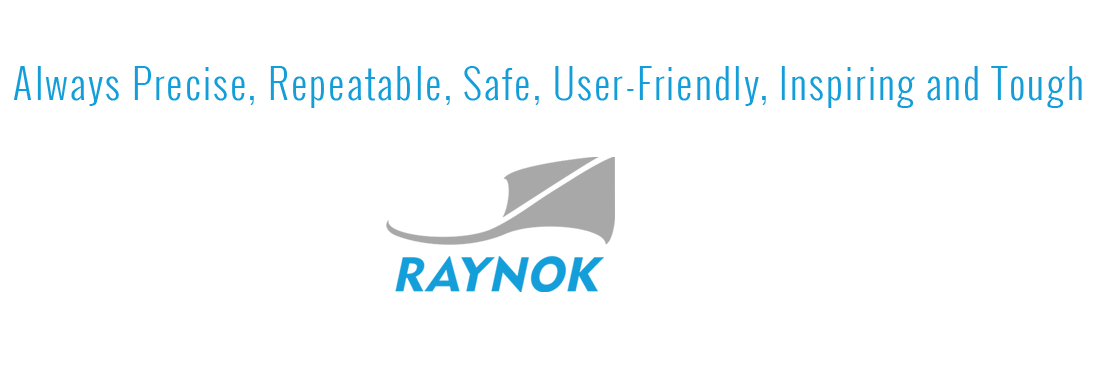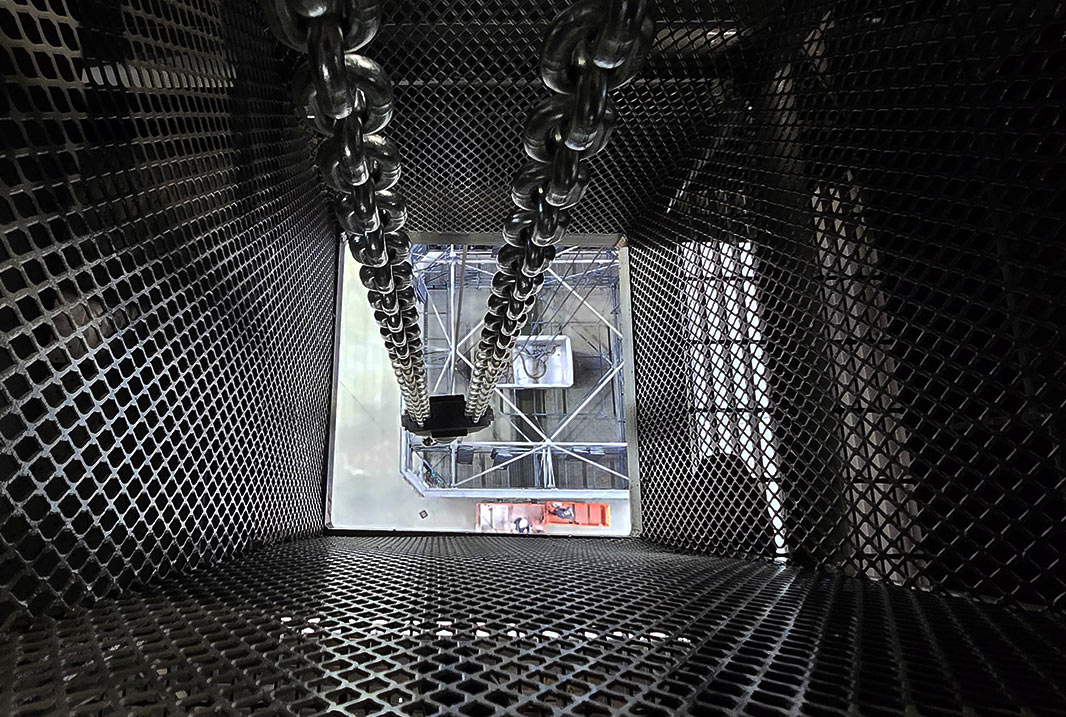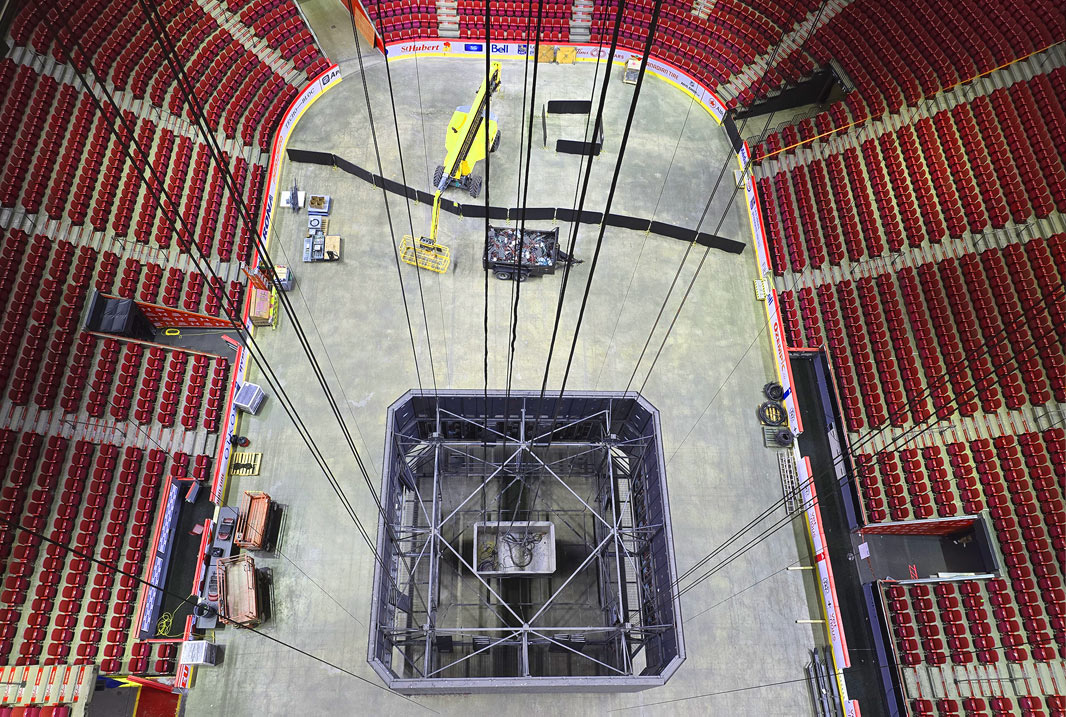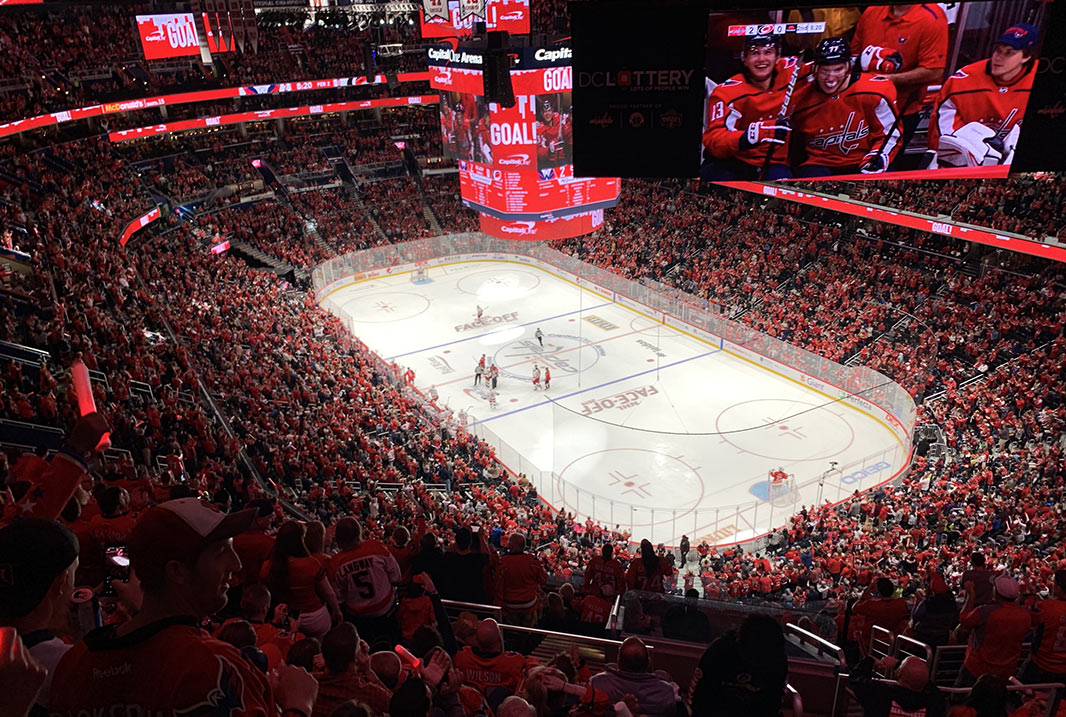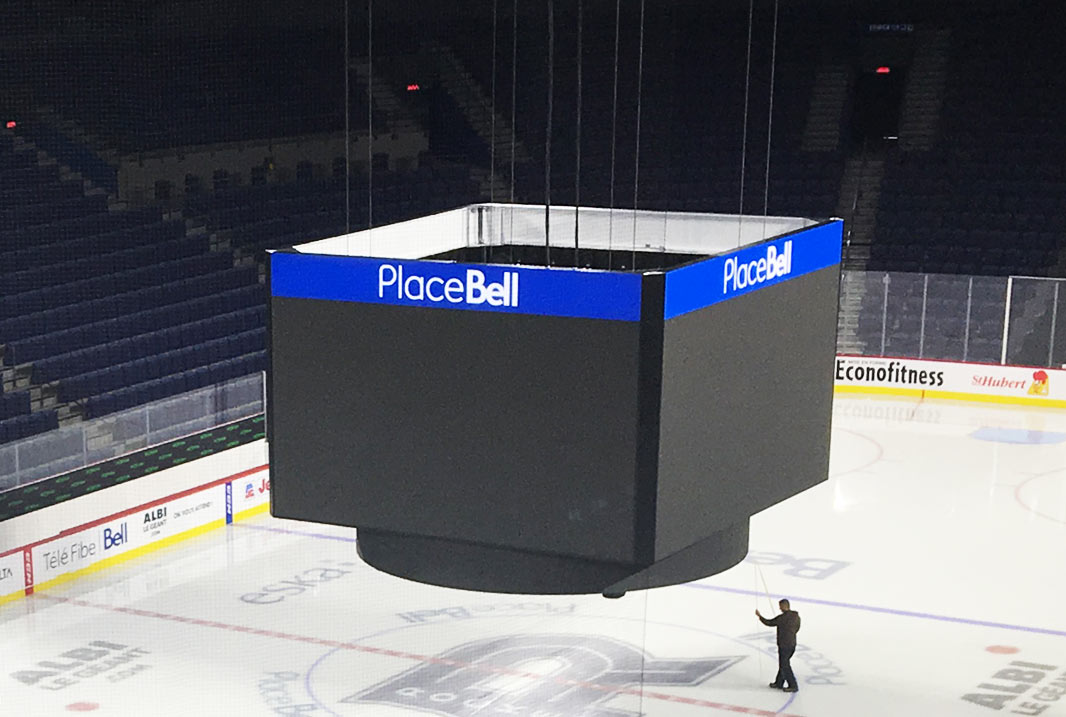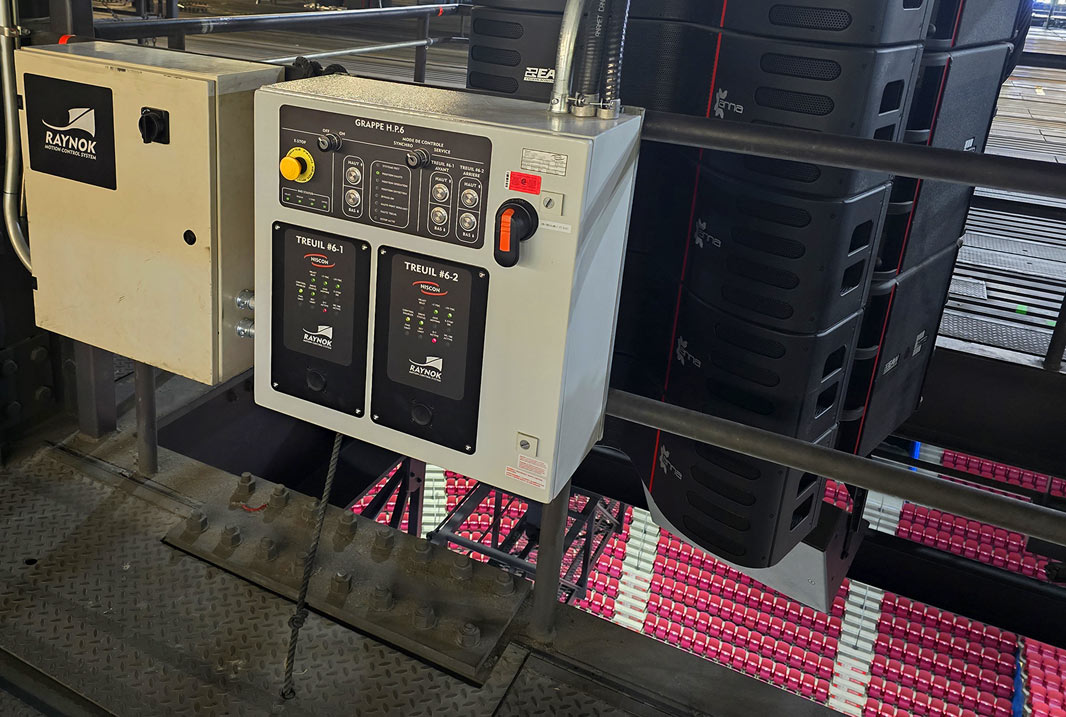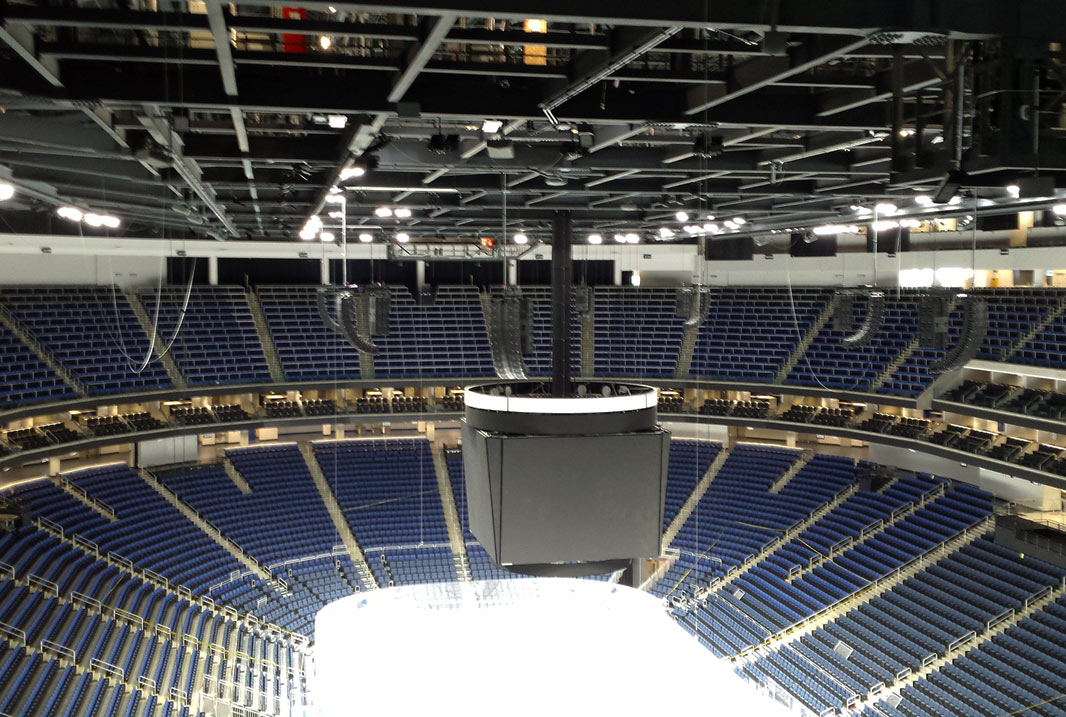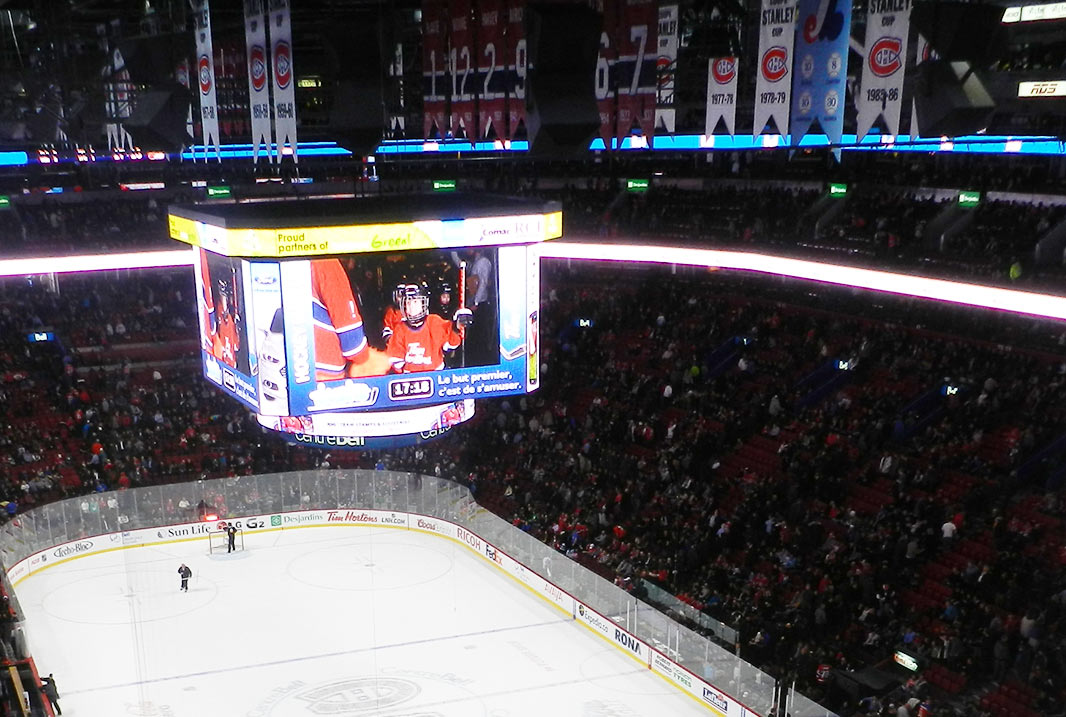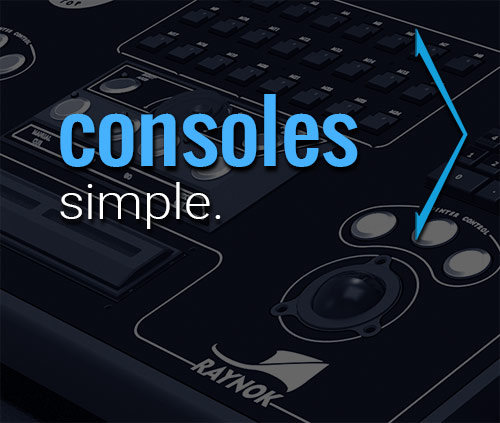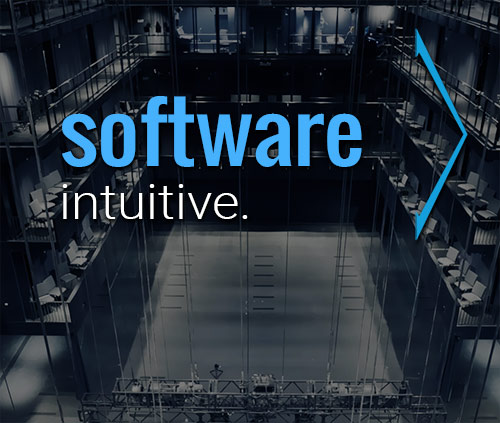PRECISION & RELIABILITY
Motion Control and Stage Automation
in Multi-Use Arenas
Modern arenas that are home to Professional or Semi-Professional sports teams are no longer single-purpose venues. They function as flexible, multi-use spaces that host, concerts, theatrical productions, corporate and special public events.
To maximize usage and profit from the capital investment of the building, changeovers from one event to the other need to be performed quickly and efficiently. This process requires specialized systems to cart out the complex tasks of lifting, lowering, moving, and securing overhead infrastructure, with precision, safety, and reliability. Niscon has engineered the Raynok Motion Control System specifically for these dynamic environments, with a commitment to performance, operator safety, and a focus to reduced downtime.
Meeting the Challenge of Multi-Use Arena Changeovers
Operators of modern-day arenas require their venues to quickly shift between events, but the equipment installed for the primary tenant—usually a sports team—often gets in the way. Massive scoreboards, PA systems, and other overhead structures must be moved to make room for the incoming guest tenant. Raynok Motion Control Systems make this possible, allowing infrastructure to be hoisted, shifted, or repositioned safely and efficiently.
Motion control systems in arenas must operate under tight changeover windows, sometimes shifting from an 11 PM concert load-out to a 3 AM equipment reset for a morning hockey skate. To meet these demands, Raynok always delivers proven reliability, precise control, safety systems, and around-the-clock performance.
Core Arena Infrastructure Managed by Raynok Motion Control
Raynok systems are used to control several critical arena elements that require precise repositioning based on the event schedule:
- Scoreboards: These large arena central elements, typically suspended above the playing surface, must be raised and lowered with precision. They are safely stowed during non-sporting events, lowered for maintenance procedures, and restored to viewing height for their primary purpose.
- Public Address Systems: Speaker clusters and other PA or audio components are often lifted out of the way for concerts then lowered again for games.
- Public Safety Netting: These nets prevent hockey pucks from entering the audience areas. Hung from a bar lifted by a wire rope machine or winch, they must be tensioned precisely and carefully, just enough to deflect pucks without stressing the glass stanchions they clip to. Over-tensioning can pull stanchions upward and loosen the glass, which slots into sleeves in the dasher boards. Nets are often bundled to the bar using a method called “West Coasting” then flown out of sight.
- Curtains (often used for Bowl Reduction): Large curtains are deployed to block unused seating during smaller events, improving acoustics and audience focus. Stored overhead, they may operate as draws, roll drops, or contoured lift curtains. Depending on architecture, they can split and retract to both sides, curl back into locker areas, or be drawn into dead zones for storage.
- Truss and Lighting Grids: Used primarily for Television Lighting trusses are lifted for servicing or removed from sight lines during transitions between concert and sports setups.
- Jersey and Pennant Displays: Championship banners, flags, and retired numbers often must be flown for clearance during certain configurations.
- Gantry Beam: Used when a proscenium-style setup is required for an event.
Lifting and Movement Solutions for Arenas
Rigging System Engineers utilize a wide variety of mechanical systems in arena rigging, basing their selection on the load capacity and application requirements:
- Wire Rope Machines / Winches: Commonly used for lifting nets, trusses, curtains, and scoreboard systems.
- Chain Hoists: Applied where simpler or more modular lifting is needed, such as for small lighting or banner elements. They are sometimes used for nets and scoreboard systems.
- Draw and Roll Curtains: Used for bowl reduction, where curtains are either drawn horizontally or rolled vertically based on the arena’s design.
- Gantry and Beam Trolleys: Used for horizontal movement to reposition lifting points or structures that span the playing surface or run along its length.
Achieving precise and safe movement requires specific knowledge about heavy lifts. The Niscon Engineers behind the Raynok Motion Control System have installed solutions across in Professional, Semi-Professional, and Regional Sporting Arenas across North America.
Safety, Reliability, and Fast Turnarounds
As mentioned, arena motion control systems must perform flawlessly under tight changeover windows and in high-pressure situations. Raynok systems are designed with features that ensure reliability and safety even during the most demanding overnight turnarounds:
- Robust Mechanical Design: Components are engineered to endure challenging environmental conditions like extreme temperature swings and high humidity, as well as mechanical stress.
- Failsafe Systems: The system is designed to trigger automatic safe stops if it detects any irregularities or issues during a lift.
- Real-Time Feedback: Operators receive constant, critical information on every key variable, including position, tension, and load status. This allows them to operate quickly, confidently, and safely.
- Redundancy: Systems incorporate alternate control methods, such as physical hardware buttons, allowing operators to bypass potential software or computer failures and still get the job done.
These principles reflect what defines every Raynok solution: safety, performance, quality, simplicity, and reliability.
Operator Experience and Support
Niscon prioritizes system intuitiveness, making our Raynok Motion Control Systems accessible for operators with varying levels of experience.
- Software Simplicity: The user interface is designed to be intuitive, allowing operators to execute tasks quickly via visual and graphical controls.
- Backup Methods: Localized Control Interfaces provide alternate operation paths, ensuring critical tasks can be completed in the event of an unlikely hardware failure.
- Focal Point Operation: The system’s user-focused design demands operators to be attentive and focus on the task at hand.
- 24/7/365 Support: We offer around-the-clock, year-round support. This is particularly valuable for arenas during off-hours changeovers (like the 3 AM morning skate reset) when assistance can be most needed.
Scalability and Future Proofing
Raynok Motion Control Systems are built with scalability and adaptability in mind, designed to grow with a venue over time. This is demonstrated by multi-year upgrade projects. For example, at one major national hockey arena, a comprehensive upgrade project has been phased in over a six year period, allowing the venue to manage significant improvements incrementally.
This incremental approach allows clients to schedule upgrades within tight seasonal windows (like the summer break between hockey seasons) and spread the capital expenditure over several years. Raynok engineers work to figure out how to integrate with or replace aging equipment as needed, making this phased approach feasible and appealing. Past phases of this particular arena have included upgrades to scoreboard control, speaker clusters and safety nets, gantry beams, scoreboard, and scoreboard machinery. Future phases are planned for hoisting retired jerseys and division and championship banners.
Integration with Building Systems
While direct integration with lighting and audio systems is uncommon in arena settings, Raynok systems do occasionally interface with other building infrastructure. This includes integrating with HVAC Systems and Life Safety Systems (such as fire alarm systems).
Final Thoughts
Raynok’s extensive experience in motion control for arena applications underscores the importance of durable, safe, and intuitive systems that support rapid venue turnover without compromising performance. While arena work is sometimes considered “pretty simple” compared to other Raynok projects, it still demands deep knowledge of heavy lifts, proper tensioning, and event-specific requirements.
From raising massive scoreboards to precisely controlling safety netting, Raynok’s blend of engineering precision and user-focused design ensures our systems perform in the most demanding multi-use environments. Our focus remains steady: safety, performance, quality, simplicity, and reliability. And yes, as proud Canadians who love hockey, we particularly enjoy working on hockey arenas.
